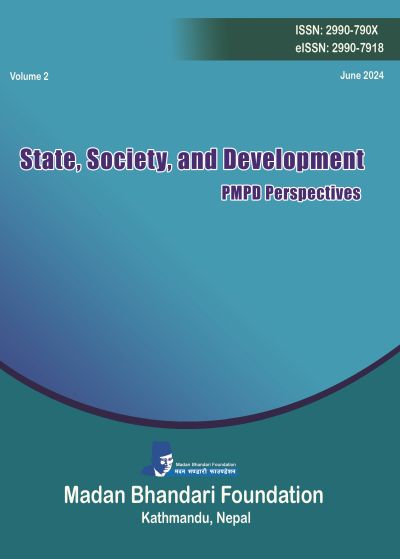People’s Multiparty Democracy: A New Vision
DOI:
https://doi.org/10.3126/ssd.v2i01.67221Keywords:
PMPD, Intra-party democratization, Democratic communist partyAbstract
A smooth transition from an authoritarian to a democratic political system has always been a prime concern. In a democracy, the majority rules with due while the voices of the minority are respect to voices of the minorities. For a democratic country to serve its people effectively, it needs political parties to maintain social justice and equity. In that light, this article explores democratization processes in communist parties, using case studies from Nepal. Based on the People’s Multiparty Democracy (PMPD), which later became the guiding political philosophy of the Communist Party of Nepal (Unified Marxist-Leninist) (CPN UML). This study explores the dynamics of democratic centralism and its role in decision-making and leadership development with highlights of the relevance of intra-party democracy. With an emphasis on internal democracy in developing collective leadership and decision-making, especially in the Nepali context, this article proposes diverse methods of intra-party deliberation, debates, and decision-making . Overall, it critically examines the party politics to ensure unity in action through democratic centralism in the left-winged parties. Precisely, the communist parties in practice should be democratized, maintaining balanced relations with other parties, government agencies, and non-governmental organizations.
Downloads
Downloads
Published
How to Cite
Issue
Section
License
Once published, an article in this Journal is not permitted to publish in other journals or similar publications without the permission of the Foundation. Contents and perspectives presented in the articles in the journal are solely of the authors.




